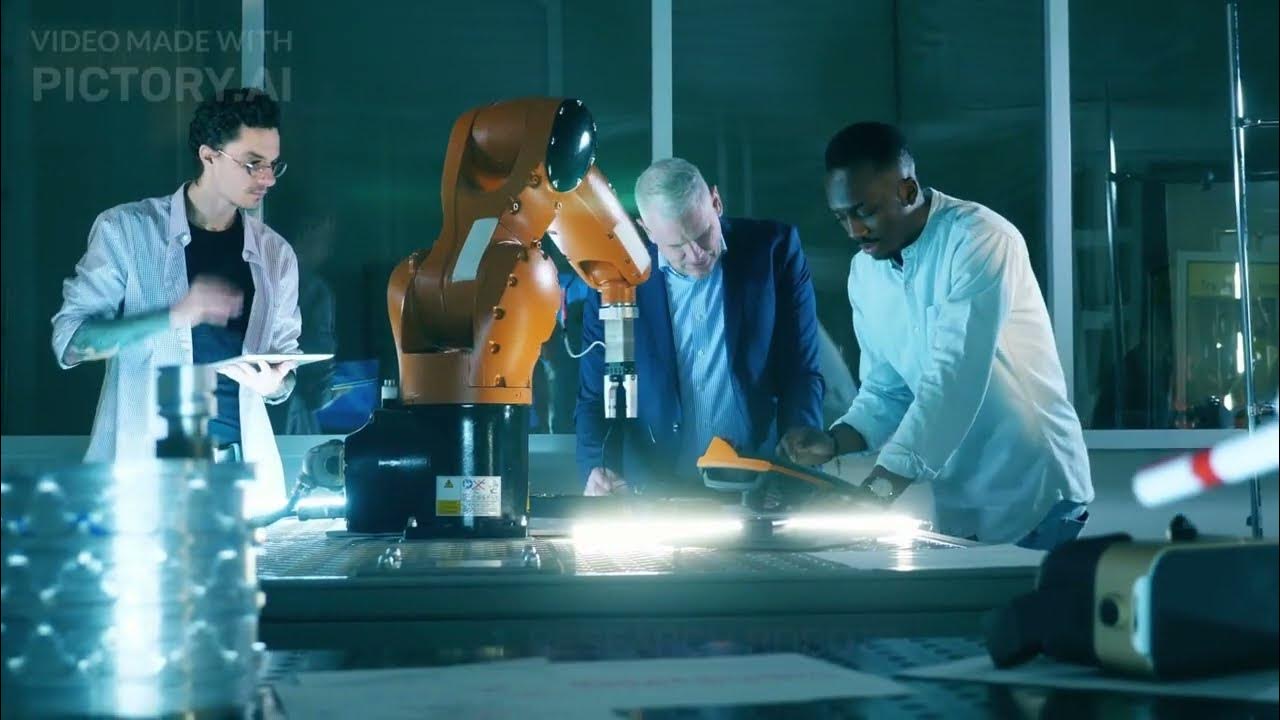Upward with Transfr — How We Built the Future of VR Career Exploration: CE 2.0
Summary
TLDRTransfer introduced a new career exploration experience to help users explore roles in various industries without specialized equipment. Based on customer feedback, simulations are now shorter, expanded across more career clusters, showcase diversity, and have improved accessibility. The experience aims to give students and job seekers exposure to more careers, help them determine interests and fit, and allow instructors to guide next steps. Data and analytics will also help map classroom-to-career pathways. Overall, the goal is to showcase opportunities, address skill gaps and open jobs, and ultimately get more people into well-paying, in-demand careers.
Takeaways
- 😊 Transfer's career exploration product started in 2020 to help expose people to careers and build talent pipelines.
- 👩🏫 Customers wanted shorter simulations to quickly explore more careers in one sitting.
- 🔬 The new career exploration includes major updates like close captioning for accessibility.
- 📊 It provides student tracking data to help instructors guide them to careers.
- 🚧 There are new engaging career simulations like line workers and semiconductor manufacturing.
- 😃 The updated career exploration is more fun, story-driven and focused on problem solving.
- 🔎 Research ensured the new simulations match high-demand careers like healthcare.
- ⚙️ An internal no-code platform empowered designers to build simulations faster.
- 🔢 Data and analytics will play a big role in recommending next steps for students.
- 👐 The goal is to actively guide people from early exposure to getting a relevant job.
Q & A
What was the initial purpose of Transfer's career exploration product?
-The initial purpose was to allow people to explore a variety of careers quickly without needing to purchase Transfer's full catalog of training simulations. It enabled career exposure for students and recruiting pipeline development for employers.
What are some key differences between the original and new career exploration products?
-Key differences include: shorter 3-5 minute simulations rather than 15-20 minutes, more career clusters covered (aiming for all 16 eventually), greater diversity among the coaches/instructors, improved accessibility features like closed captioning, and more robust tracking of student data.
What new accessibility features are being added in the career exploration 2.0 product?
-Major new accessibility features include closed captioning to assist those who are hard of hearing or English language learners. There is also improved support for tracking individual student accessibility needs.
What are some examples of new career simulations being developed?
-New simulations cover careers like broadband technicians, line workers, health sciences roles (surgical technologist, EMT, nurse), and semiconductor manufacturing technicians.
Why is career exposure especially important right now?
-There are over 10 million open jobs in the U.S. but only 6 million unemployed people, so workers have lots of choices. But many people, especially youths, have limited exposure to what jobs are actually available and what those careers entail on a day-to-day basis.
How will the new dashboard for instructors improve their ability to guide students?
-The dashboard provides detailed tracking of which students explored which careers, what they were most and least interested in. This helps instructors efficiently prioritize counseling and connecting students with next steps like training programs, professionals in the field, and open jobs.
How might Transfer leverage data and analytics more in the future?
-Potential future uses include identifying gaps to build more career simulations, making personalized recommendations to students for next explorations or training programs, and even recommending open jobs.
What was the motivation for building the Transfer SDK platform?
-The Transfer SDK is a no-code/low-code platform that empowers designers to build simulations without needing a developer. It aims to eventually enable a global community of designers and subject matter experts to create their own simulations.
What were some challenges faced in developing the new career simulations?
-Challenges included building on the new SDK platform for the first time, finding the right balance of learning and engaging storytelling, and innovating production processes to be more efficient and collaborative.
How might the career exploration product continue to evolve in the future?
-It will likely continue expanding the number of career clusters and occupations covered. The simulations and dashboard analytics may become more personalized and actionable in guiding each student's next steps.
Outlines

Dieser Bereich ist nur für Premium-Benutzer verfügbar. Bitte führen Sie ein Upgrade durch, um auf diesen Abschnitt zuzugreifen.
Upgrade durchführenMindmap

Dieser Bereich ist nur für Premium-Benutzer verfügbar. Bitte führen Sie ein Upgrade durch, um auf diesen Abschnitt zuzugreifen.
Upgrade durchführenKeywords

Dieser Bereich ist nur für Premium-Benutzer verfügbar. Bitte führen Sie ein Upgrade durch, um auf diesen Abschnitt zuzugreifen.
Upgrade durchführenHighlights

Dieser Bereich ist nur für Premium-Benutzer verfügbar. Bitte führen Sie ein Upgrade durch, um auf diesen Abschnitt zuzugreifen.
Upgrade durchführenTranscripts

Dieser Bereich ist nur für Premium-Benutzer verfügbar. Bitte führen Sie ein Upgrade durch, um auf diesen Abschnitt zuzugreifen.
Upgrade durchführenWeitere ähnliche Videos ansehen

Highest Paying Trade Jobs No One’s Talking About (2025)

Is MS in Cyber Security the best career in AI era? Let's find out!

Career Services - Informational Interviewing for GBS 151

Management Trainee ASTRA GRADUATE PROGRAM (MT AGP) - PT Astra International Tbk || #IntipKarir

Types of Robot and their uses

Aviation Career Paths - More Than Just Airlines! - Part 1
5.0 / 5 (0 votes)
